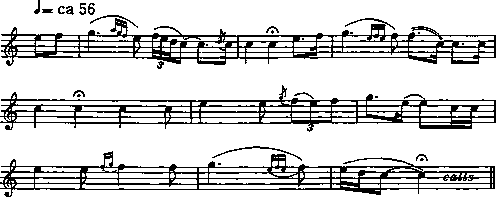Folk & Traditional Music of the Western Continents
The folk & traditional music of Europe, Africa & the Americas explored.
| Share page | Visit Us On FB |
|
THE GENERAL CHARACTER OF EUROPEAN FOLK MUSIC 40 |
||
|
|
||
|
European folk repertory at later times—and this includes most of those danced by couples, and many of the other kinds of social dances—have more complex music which shows, as does the dance itself, the influence of sophisticated musical cultures. However, while we can in good conscience make such broad generalizations |
||
|
|
||
 |
||
|
|
||
|
example 3-9. Corsican "Tribbiera," from Wolfgang Laade, "The Cor-sican Tribbiera, a kind of work song," Ethnomusicology 6 (1962), 185.
about folk dance and dance music, we must also stress the tremendous variety of dances which exists in Europe. The dance seems to be one area of culture in which European trends are similar or closely related to those in other continents. Possibly this means that the older layers of European culture, those which antedate the introduction of Christianity, and which stem.from a time when the European folk cultures would have been classed as primitive or nonliterate, have remained present in the dance more than in some other aspects of culture.
At any rate, mimetic dances (those which choreographically represent actions, events, feelings, persons, or animals) are found throughout European folk culture and in other continents as well The same is true of dances with weapons (sword dances, for instance, are performed in Scotland, Central Europe, and India), dances having sexual symbolism, and acrobatic dances, to name just a few. Gertrude Kurath5 has made a survey of European folk dances and has managed to divide the vast array into several types, according to the form and style of dancing. For example, she distinguishes among
5 Gertrude P. Kurath, "Dance," Funk and Wagnalls' Standard Dictionary of Folklore, Mythology, and Legend (New York, 1949-50), I, 276-96. |
||